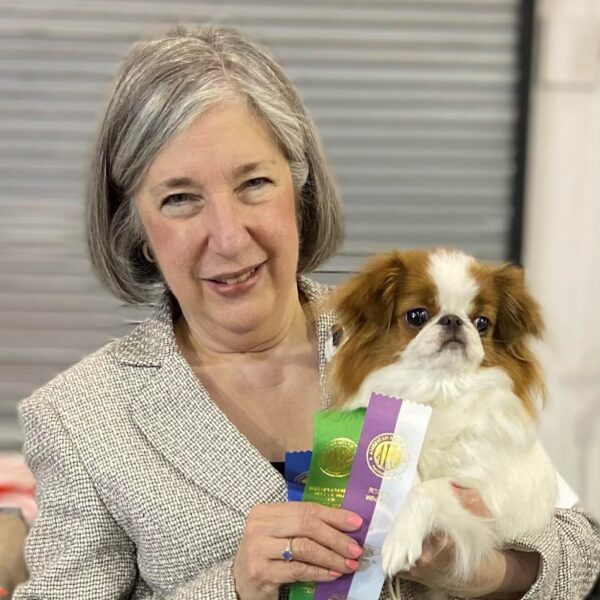The Colors of the Japanese Chin
One of the many beautiful traits of the Japanese Chin is the color variation allowed in our Breed Standard. While only three colors are listed in the AKC Standard, the variety of shades within these colors is diverse.
The three color categories are black and white, red and white, and white with tan points. Following are the statements from the Japanese Chin AKC Standard which describe red and white and tan points. “The term tan points shall include tan or red spots over each eye, inside the ears, on both cheeks, and at the anal vent area if displaying any black. The term red shall include all shades of red, orange, and lemon, and sable, which includes any aforementioned shade intermingled or overlaid with black.” One can imagine all the depths of shades, from quite pale to deep reds allowable. This is true of the sable color as well.
“Among the allowed colors there shall be no preference when judging.” One does see more black and white Chin because the color is genetically dominant in the breed. It is interesting to note, the only disqualification in the Japanese Chin Standard is about color. It states, “Disqualifications: Any color not listed.”
Adding to the diverse shades is the patterning on the body, which varies from Chin to Chin. As to body patterns, this is stated: “The size, shape, placement or number of body patches is not of great importance.” Japanese Chin range from quite heavily marked or very slightly marked, and all are acceptable on the body. The only statement about body color is this: “The white is clear of excessive ticking.”
When it comes to the head, these statements from the Standard define color placement. “A clearly defined white muzzle and blaze are preferable to a solidly marked head. Symmetry of facial markings is preferable.” Clearly, color and patterns are a very important aspect of the Japanese Chin. It is also a very fun and sometimes challenging aspect for the breeder and the fancier.




















